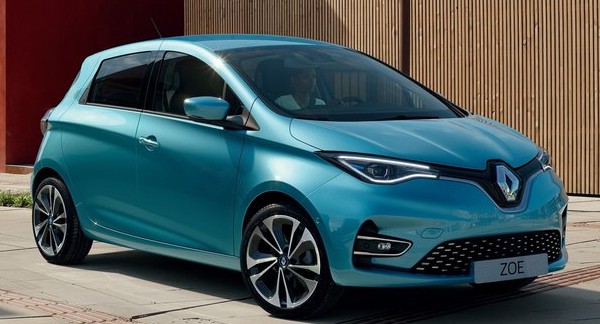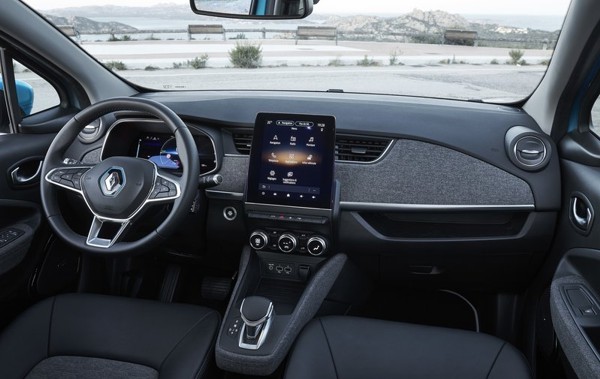Published
on 2
Apr 2013
|
All rights reserved.
|
|
|
Until now, Carlos
Ghosn's bet on electric cars does not come to fruition as he expected.
3 years ago, he estimated Renault-Nissan alliance will produce 500,000
to 1 million electric vehicles a year by the end of 2014. That's why he
invested some 4 billion euros into EV projects. Now half the period has
passed away and it is time to have a mid-term review. Since sales of
Nissan Leaf began in late 2010 to the end of last year, the group sold
a cumulative 68,000 EVs, including Renault Kangoo Z.E., Fluence Z.E.
and Twizy. It is fair to say the original target was wide off the mark.
Nevertheless, to judge its failure is probably too early, because the
most important model in the plan is entering the market just now.
Renault Zoe is a supermini-sized 5-door hatchback. It should appeal to
more customers with its keener prices yet practical packaging.
In UK, Nissan Leaf is currently sold at £23,500 (after a recent
price cut) including the government grant of £5,000. That might
be too much for most motorists. In contrast, the Zoe is priced at
£14,000 including grant, which is right at the same level as many
well-built diesel superminis. Admittedly, the battery is not part of
the deal, thus you need to rent the battery at £70 a month (or
more if you are high mileage user). Still, the overall cost is
significantly lower than Leaf, and the lower entry fee is easier to be
swallowed by working class. Moreover, it won't give you an impression
of "less car for more money", so you are unlikely to cross-shop a car
of higher class. The same can't be said to Leaf, where its potential
customers may find BMW 320i a better alternative. In
short, Zoe is probably the first production EV priced comparably to
conventional rivals.
It is well styled, too. Its face looks futuristic, especially aided by
the blue tinted lights and Renault logo, just as a high-tech car
deserves. It is sized like a Clio IV because it is built on the same
platform and assembled in the same plant in France. There are
significant modifications though. An 88 hp synchronous motor replaces
the piston engine to drive the front axle through a single-speed
step-down gearbox. Under the elevated floorpan sits the lithium-ion
battery, which has a capacity of 22 kWh and weighs some 290 kg. As
usual, such a low placement of battery actually improves the car's
center of gravity, which is said to be 35 mm lower than the outgoing
Clio III. Weight distribution is also improved slightly to 59:41 front
to rear – it won't be difficult to improve even further, but a slight
bias to the front is preferred on the ground of traction I would say.
Renault also claimed the chassis is 55 percent stronger in torsional
rigidity than Clio III.
Blame to the battery, the Zoe tips the scale at 1468 kg, a massive 460
kilos more than a Clio 0.9TCe with similar power. To cope with the
extra weight, its front suspension gets a stronger subframe and lower
suspension arms from Megane. The rear torsion-beam is the most robust
one available in Renault parts pool, while polyurethane bump stops have
been added for better shock absorption. Meanwhile, the steering gets
heavier duty assistance motor, faster ratio and stronger linking rods
from the previous Clio RS.
Before you get to drive it, you may use a dedicated App on your
smartphone to check the battery level so to make sure the car can
take you to the destination and back. Through this App you may also
remote control the air-conditioning to pre-heat or pre-cool the car in
your garage using plug-in electricity, so it will consume less energy
on the drive and leaves you more mileage in reserve. Speaking of
mileage, the car is rated at 130 miles (210 km) in the usually
optimistic EU combined cycle. Renault said in reality you
are likely to get closer to 90 miles (145 km), or in case of freezing
temperature (which worsens battery performance) at least 60 miles (100
km). It won't be a cross-country tourer, of course, but it will be more
than competent to be used as a city car. Recharging time is reasonable.
Plug into a household 230V 16A socket and it will take up to 9 hours.
If you
use the dedicated 3-phase 63A quick charger, it will take 1 hour for a
full charge or half an hour to charge to 80 percent full.
Get on board, you will find the seating level much higher than that of
Clio or any other superminis because of the battery sitting underneath.
This gives you a good view on the road. Headroom is not a problem as
the roof is set 114 mm taller than that of Clio. Legroom is also very
good for a B-segment supermini. Predictably, the cabin cannot afford
soft-touch plastics, but the material quality is not bad. Many switch
gears come from Clio, including the iPad-style center console with
R-link infotainment system, but the digital instrument is new, as it
needs to
display information regarding battery status and driving range. The
boot is pretty large at 338 liters, 38 more than Clio, thanks to the
lack of exhaust and fuel tank.
On the move, the strong torque of the electric motor – some 162 lbft
from as little as 250 rpm to 2500 rpm – offsets the extra weight
and pulls the car happily in urban area. At higher speed the car feels
less energetic as its torque fades out at higher rev. Top speed is
limited at 84 mph to avoid
draining the battery too much. However, if you primarily use the car in
city, its performance is hard to fault. More remarkable is
refinement. The operation of electric motor is super-smooth and near
silent compared with piston engines. The lack of gearshift also
contributes to a seamless acceleration. The Michelin Energy low rolling
resistance tires generate little road noise. Light steering and a
supple
low-speed ride add further to its likeable city car manner.
Inevitably, the EV is not engineered to be a driver's car.
Although it controls body roll and resists understeer well, you can
feel the extra weight when you up the pace. Its suspensions fail to
soak up fast bumps and expansion joints on highway as if they are not
designed to handle so much weight. In bends, the low rolling resistance
tires run out of grip sooner than the case of Clio. The braking is
hampered by the
non-linear switchover from regenerative to mechanical braking, thus the
pedal feel is poor. There is not much fun to drive the car hard.
If you buy this car for driving fun, you will miss the point. An
electric car should be driven
with a peace of mind to deliver the low-carbon benefit it is supposed
to offer. The Zoe is a good companion to achieve this objective.
Renault calculated that its well-to-wheel CO2
emission is only 54 g/km (considering the electricity generation mix in
Europe), just half the level of a conventional diesel supermini. At the
same time, you will have virtually no sacrifices in other areas. This
is unquestionably the most realistic EV to date. Carlos Ghosn might be
relieved to hear that.
|
Verdict:     |
Published
on 28
Mar 2020
|
All rights reserved.
|
|
Zoe (2020)
|
|

|
|
More
power and battery keeps the Renault EV competitive.
|
|
It doesn’t look like a
7-year-old model, does it? Perhaps the original Renault Zoe was so
ahead of its
time, the 2020 facelift needs the minimum alteration to its exterior
(spot the difference by yourself). Instead, the biggest and most
desperately needed upgrade is the interior. Gone is the ungainly
dashboard and all the shinny hard plastics, replacing them is a more
upmarket-looking dashboard made largely of soft-touch plastics. It is
obviously benefited from the new Clio, including the 9.3-inch portrait
touchscreen and a 10-inch digital instrument. The infotainment system
is much improved, of course. It is easier to use and the main menu can
be customized. Cabin space is unchanged though, so it is slightly
narrower than the new Clio’s, and the rear bench is still pretty tight
for adults. That said, as a supermini, that is quite normal.

|
|
Interior
gets more upmarket.
|
|
A couple of years ago, Renault updated the Zoe by enlarging its battery
to 41kWh and upgrading its motor to 109hp. For the 2020 update, you get
more again. The battery is enlarged to 52kWh, slightly more than its
arch-rival Peugeot e-208 and Opel Corsa-e (both 50kWh), far more than
Mini Cooper SE and Honda E with which the Renault also compete. This
extends it WLTP driving range to a class-leading 386km or 240 miles,
making the Zoe far more practical than before. Meanwhile, a new motor
produces 136hp, improving 0-60 by 2 seconds to just under 9, although
still slower than all the aforementioned rivals. The Zoe’s top speed is
capped at only 87 mph.
However, the price of this higher power, longer range model has also
increased beyond its rivals. This makes its inferior performance,
ride and handling harder to swallow, not to mention it still lacks the
premium feel of Peugeot, Mini and Honda. Perhaps Renault needs a new
car.
|
Verdict:    |
|